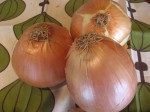Note: For the lowdown on salmon, visit http://www.eatandbeatcancer.com. The bottom line is that pink salmon–yes, the kind you find in cans–is the cleanest.
As fish go, some are good for you, due to their high levels of Omega- 3 fatty acids, and some are suspect, chock full of heavy metals and chemicals from polluted waters. In general, look for cold-water fish from clean waters and for relatively small, short-lived fish that eat lower on the food chain, hence are less contaminated.
Here’s a list of some common fish to help you choose the healthiest ones that are not endangered. Be careful how you cook them, though. Frying in oil will create harmful transfatty acids. Adding herbs, lemon and spices, rich in anti-oxidants, protects the Omega-3 fats during the cooking process.
Best (up to 4 times a week): anchovies, Arctic char (farmed), herring (but avoid the Baltic), mackerel (Atlantic, not King, Spanish, Gulf of Mexico), rainbow trout (farmed), salmon (wild Alaskan or Pacific, except as discussed below and including canned sockeye, chum, pink packed in water), sardines (in water), sole (Pacific), striped bass (farmed), tilapia (US farmed)
Medium: (once a month): black cod (Alaska or Canada), cod (Pacific; Atlantic is overfished), flounder (Pacific), halibut (Pacific), mahi mahi, salmon (California, Oregon, Washington), sole (Pacific), tilapia (Central America farmed), tuna (fresh from US or Canada or canned light in water, not Bluefin, Bigeye or Yellowfin, not canned albacore)
Avoid: Artic char (freshwater), flounder (Atlantic), grouper, haddock, halibut (Atlantic), mackerel (King and Spanish, Gulf of Mexico), pike, salmon (Atlantic, farmed), sea bass (wild) and Chilean sea bass, snapper, shark, sole (Atlantic), swordfish, tilapia (China, Taiwan farmed), trout (Great Lakes), tuna (fresh Bigeye, Bluefin, Yellowfin. Of the canned tunas, Albacore has the highest mercury content and chunk light, the lowest.)
Check out www.thegreenguide.com for more details, and note that this list was compiled without regard to the environmental impact of fish farming and prior to Japan’s Spring 2011 disaster. That’s another story–or three. For now, avoid fish from Japanese waters and large migratory fish from the Pacific–primarily tuna, which could potentially feed on smaller fish and plants in Japanese waters. Japan’s government has been reporting radiation in many species of fish.







 I like to add some oregano for extra flavor as well as its
I like to add some oregano for extra flavor as well as its 